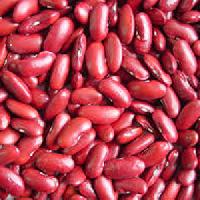
Yarns Polyester Fabric
We offers Yarns made from 100% polyester fiber for weaving or knitting use. Single or multi fold polyester yarns are possible.
Material : Polyester
Usage : Textile Use
Color : Multicolour
Technics : Attractive Pattern
Pattern : Printed
Density : High Density, Low Density
Specialities : Easily Washable, Smooth Texture
...more
raw cotton yarn
After gaining the name and fame in the field of Raw Cotton and Agro Commodities to different part of the world we have started a new wing of Yarn since January,2013 for exports on merchant export basis working with top and leading spinning mills of India, Pakistan, and Indonesia.
...more
Sugar
India has emerged as the 2nd largest producing and the highest consuming nation of Sugar in the world. Indian Sugar industry depends largely on cane based Sugar
...more
Soyabean Meal
Soybeans are an important global crop, providing oil and protein. Specification : Protein : 48% Min Moisture : 12% Max SandSilica : 2.50% Max Fiber : 06% Max
...more
Pulses
Two commercial types of chickpeas are produced: kabuli and desi. The kabuli or garbanzo type, large-seeded with a thin, delicate and colorless or white seed coat, often is made into snacks (in South Asia), ground into hummus (in the Middle East) or canned whole for the salad bar trade (in North America). The desi type, small-seeded with a thick, hard and colored seed coat, often is exported whole to the Indian subcontinent. The desi type usually is prepared for consumption either by dehulling and splitting or by dehulling and grinding into flour. Chickpeas are grown almost exclusively for human consumption, with seed type and ethnic culture determining their use. Chickpeas are an excellent source of protein, fiber, complex carbohydrates, vitamins and minerals. Small volumes of low-quality chickpeas are being used for livestock feed.The two distinct types of chickpeas really are two different crops, each with a separate use and market. There is a small but growing demand for high-quality kabuli chickpeas in North America, where they mainly are used in salad bars and vegetables mixes. They also are used in producing a wide variety of snack foods, soups, sweets and condiments. About 85 percent to 90 percent of the world chickpea production is the smaller, lower-priced desi while the remainder is the larger, higher-priced kabuli or garbanzo bean. A large portion of chickpeas are consumed in the countries where they are produced. India alone accounted for 56 percent to 72 percent of world production each of the past five years The bulk of the desi type is produced in the Indian subcontinent. India imports significant amounts of chickpeas despite being the world’s largest producer. India and the subcontinent, where chickpeas are a staple in their diet, import mainly the desi type, while countries in the Western Hemisphere, Europe, the Middle East and northern Africa import primarily the kabuli type.
...more
GRAINS
Sorghum is used for food, fodder, and the production of alcoholic beverages. It is drought tolerant and heat tolerant and is especially important in arid regions. It is an important food crop in Africa, Central America, and South Asia, and is the “fifth most important cereal crop grown in the world”. African slaves introduced sorghum into the U.S., where most of the world’s commercially grown sorghum is now produced, in the early 17th century.Recently, however, the US Congress passed the Renewable Fuels Standard, with the goal of producing 30 billion litres (8 billion gallons) of renewable fuel (ethanol) annually by 2012. This bill should noticeably increase the demand for ethanol producing crops for at least the next decade. Sorghum produces the same amount of ethanol per unit as maize, therefore in hot areas where sorghum can out produce maize this bill should result in an increase in grain sorghum cultivation. Sorghum growers are hoping that this will create just the market they need to take off with production. Currently, 12% of grain sorghum production in the US is used to make ethanol, and growers are hoping for an increase.Sorghum and Beer
...more
Fenugreek Seeds
Fenugreek is the small stony seeds from the pod of a bean-like plant. The seeds are hard, yellowish brown and angular. Some are oblong, some rhombic, other virtually cubic, with a side of about 3 mm.
...more
Dark Red Kidney Beans
Just as its name suggests, the kidney bean is shaped like a kidney. Since these dark red beans hold their shape really well during cooking and readily absorb surrounding flavors, they are a favorite bean to use in simmered dishes.
...more
Cummin Seeds
Cumin seeds are the seeds of Cuminum cyminum, which belongs to the parsley family. It is pale green in color and elliptical in shape with deep furrows.
...more
Chick Peas
We offer chick peas. Two commercial types of chickpeas are produced: kabuli and desi. The kabuli or garbanzo type, large-seeded with a thin, delicate and colorless or white seed coat. The desi type in small-seeded with a thick, hard and colored seed coat.
...more
ring spun carded yarns
We are offering ring spun carded yarns. Auto coned spliced & non-auto coned 'eyc' yarns of different grades for knitting & weaving uses. We can supply multifold yarns and yarns made from indian, american and egyptian cotton also.
...more
multifold yarns
We are offering multifold yarns, cotton yarns for weaving or knitting with 2 or multi fold. We can supply the double or multifold yarns made on tfo or ring double wet spliced as per customers need.
...more
Specialty Cotton Yarns
We can supply gassed, mercerized yarns and the double steam set. We can also supply 'compact spun' yarns made out of indian long staple as well as egyptian 'giza' and american 'pima' cotton.
...more
Viscose Yarns
We offers 100% viscose yarns made for knitting or weaving use. Possible to offer viscose yarns which are ring spun and also open end.
...moreBe first to Rate
Rate ThisOpening Hours